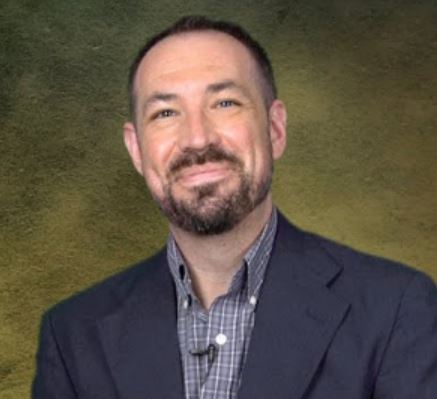
The International Buddhist Confederation (IBC), under the aegis of the Ministry of Culture, organized a conference on 1 August to discuss the “Significance of Buddhist Pilgrimage.” The conference aimed to gather young academics and researchers to learn about various dimensions of pilgrimage as seen by youth today. The conference, held in New Delhi, was attended by more than 70 young scholars from around the world.
The conference was organized to offer a welcoming and collegial environment for young researchers to share their work, engage with one another, and contribute to the field of Buddhist scholarship.
Indian academic institutions and the Indian government have in recent years worked to promote Buddhist pilgrimage, in particular to the eight major Buddhist pilgrimage sites. The first four are: Lumbini, the birthplace of Siddhartha Gautama, who would become the Buddha; Bodh Gaya, the site of his awakening; Sarnath, where he gave his first teachings; and Kushinagar, where the Buddha passed away. A second set of four major sites includes: Rajgir, site of the Buddha’s taming of a wild elephant and later home of Nalanda University and the important Mahayana site of Vulture Peak; Vaishali, a frequent stop in the Buddha’s teaching career, Shravasti, home of the Buddha’s famous “twin miracle;” and Sankassa, to where the Buddha is reputed to have returned, after teaching the Abhidhamma Pitaka in Trayastrimsa. All of these sites are in modern-day India except for Lumbini, in Nepal.
One scholar at the conference told reporters: “Taking pilgrimage to holy sites has two aspects. The first one is physical and the other is mental. According to the Buddha, the mental aspect is an act of devotion and faith. By visiting these holy places and looking upon them with feelings of reverence and showing veneration, one is able to purify one’s thought, speech, and action.” (The Print)
Research scholar from Delhi University, Jigmet Olden, spoke about “Historical Buddhist pilgrimage sites of Guru Padmasambhava in Ladakh.” In his talk, he said: “Pilgrimage is an essential part of Buddhism because it provides an opportunity for Buddhists to deepen their spiritual practice, connect with their faith, and cultivate mindfulness and compassion. It is also seen as a way to purify negative karma and gain merit or positive spiritual energy toward their path to eventual enlightenment.” (The Print)
“Since time immemorial, Buddhists have traditionally performed an annual pilgrimage to the most significant Buddhist holy sites,” Olden added. “These holy sites are revered as places of power and the physical manifestation of the Buddha’s teachings. By visiting these places, they believe they can absorb this spiritual energy and connect more deeply with the teachings of the Buddha. Among the many Buddhist pilgrimage sites, those associated with Guru Rinpoche [Padmasambhava] carry a unique significance.” (The Print)
The chief guest at the conference was the chairman of the Indian Trust for Rural Heritage and Development, S. K. Mishra. In addition to research presentations from young scholars, a keynote speech was delivered by Prof. Kuldeep Chand Agnihotri, vice chairman of Sahitya and Sanskriti Akademi, Haryana. Prof. Agnihotri offered his insights into the importance of Buddhist pilgrimage and its impact on cultural heritage.
Minister counselor from the Sri Lankan High Commission, G. K. G. Sarath Godakanda, spoke on the significance of the conference and its relevance to the global Buddhist community. Other dignitaries at the event included minister counselor of the Embassy of the Republic of the Union of Myanmar, Tin Tin Htwe Win, and the deputy chief of mission of the Embassy of Laos, Keo Sengdavong.
IBC director general Abhijit Halder remarked: “Seeing the motivation and enthusiasm, the IBC will be continuing with these conferences on many similar topics, engaging with the young scholars, in the coming months.” (The Print)
Senior assistant professor of archaeology at the University of Kashmir Ajmal Shah spoke about the many excavations in which he had taken part, including those at Farmana, Rakhigarhi in Haryana, and Junnar in Maharashtra.
See more
Young academicians, researchers take part in conference on ‘Significance of Buddhist Pilgrimage’ (The Print)
Related news reports from BDG
In the Footsteps of the Buddha: Ven. Pomnyun Sunim Leads 1,250 Jungto Practitioners on a Pilgrimage to India
Thai Buddhist Monk Inspires with 1,500-Kilometer Barefoot Pilgrimage
Plans Underway to Complete Buddhist Pilgrimage Site in Nagarjuna Sagar, Central India
Buddhist Pilgrimage City Kushinagar Inaugurates New Airport
India Plans “First-Ever” Global Buddhist Conference in November
At UN Assembly, Sri Lanka Urges Environmental Efforts and Protection of Afghan Buddhist Heritage
Indian State of Maharashtra to Develop Ajanta and Ellora for Buddhist Tourism














